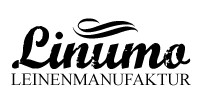Semi-Linen Fabrics

Do you need new or more towels or kitchen towels that are not only highly absorbent and lint-free, but also strong and durable? Or are you looking for bed linen that flatters your skin and is wrinkle-free and can be washed as often as necessary. And serviettes or whole placemats can also be made in no time from our large selection of semi-linen by the meter in all sorts of colors and patterns.Semi-linen is a fabric with a "warp", i.e. thinner longitudinal threads, made of cotton and a "weft", i.e. firmer transverse threads, made of pure linen. The linen content must be at least 40 percent - but the mixture is usually around 50 percent to 50 percent. This combines the advantages of these two fabrics, the cooling, silky, dry linen and the absorbent, wrinkle-free, skin-friendly cotton into a very special fabric.Half-linen is not only particularly tear-resistant, it can also be boiled and bleached without any problems - a big plus, especially when it comes to hygiene in the kitchen and bedroom. In addition, semi-linen fabric does not necessarily need to be ironed because, unlike linen, it hardly creases or folds. Thanks to the cotton content, the fabric is very absorbent - cotton can absorb up to 65 percent of its own weight in water. And while dirt adheres well to cotton, pure linen is particularly dirt-repellent - the perfect combination.The half-linen fabric is very hard-wearing, durable and colour-fast after years and hundreds of washes. No wonder our grandmothers used the same kitchen towels as we do today. Or who doesn't already know them from their childhood, the classic half-linen tea towels with their red or blue checks? Half-linen has been one of the classic fabrics for generations. When, in the middle of the 19th century, cheap and easy-to-process cotton appeared and some fabrics, such as pure linen, were almost completely ousted from the market, half-linen also experienced a boom that has continued to this day. Because even then, the advantages of mixed fabrics were recognized, especially for large-scale industry. Linen was too expensive and too difficult to care for, while cotton was mass-produced and therefore cheap, but quickly became thin, frayed and tore. So what could be better than a combination of both fabrics.









